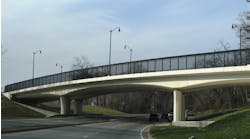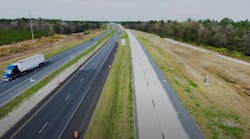The Concrete Sustainability Hub at the Massachusetts Institute of Technology (MIT) released two studies looking at the life-cycle assessment (LCA) of concrete pavements and buildings. A third assessment looked at life-cycling costing for streets and highways.
Both studies signify major advancements for construction-related life-cycle assessments. They thoroughly examine the cost and environmental impacts for the full life of pavements and buildings – including the use and operations phase – not just the costs and embodied CO2 that occur at initial construction. Currently, most LCAs in use do not fully account for these impacts, which can include traffic delays, energy consumption and maintenance.
MIT also used this life-cycle approach to evaluate the real cost of pavement throughout a 50-year lifetime, beyond initial construction costs. Researchers started with the Federal Highway Administration's (FHWA) Life-Cycle Cost Analysis in Pavement Design Interim Technical Bulletin, a process that accounts for both initial construction and future rehabilitation.
What the FHWA procedure fails to account for, however, are changes in the prices of building materials over the life of the pavement. MIT's research showed that during a 50-year timeframe, the mean real price of concrete decreases by 20%, while the mean real price of asphalt increases by 95%. To allow states to address this, MIT developed a paper and a procedure that departments of transportation can readily adopt to account for inflation.
In its environmental assessment, MIT researchers found that while concrete pavements are already sustainable in many ways, their carbon footprint can be further reduced. First, MIT developed a comprehensive methodology outlining the best-practice concepts that should be followed when conducting any pavement LCA. Specifically, any complete LCA should include the use and rehabilitation phases, which can account for between 33% and 44% of the CO2 emissions for interstate highways.
Pavements that deflect or bend slightly under traffic loads cause cars and trucks to run in a slight depression that increases fuel consumption. Pavements with greater stiffness, MIT found, mean better fuel economy for the vehicles that travel on them. As an example of the initial results, MIT looked at typical material properties for concrete and asphalt pavements and found that for the same stiffness and fuel consumption, an asphalt pavement had to be up to 60% thicker than the concrete pavement. With fuller development of this model, it will be possible to include the impacts of pavement properties and on fuel usage in both the environmental and cost analyses.
The reports are available on the Hub web site, http://web.mit.edu/cshub/.


